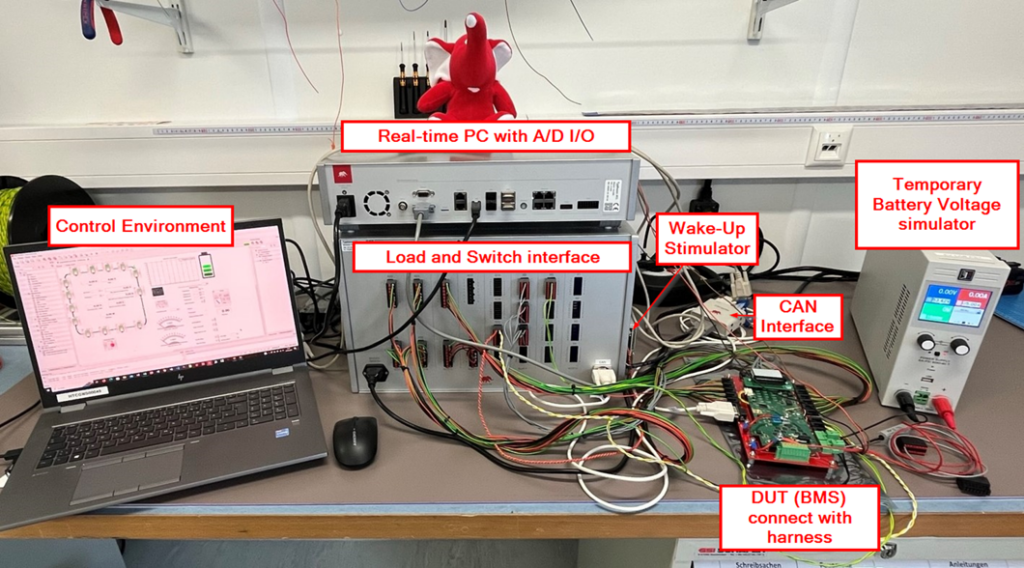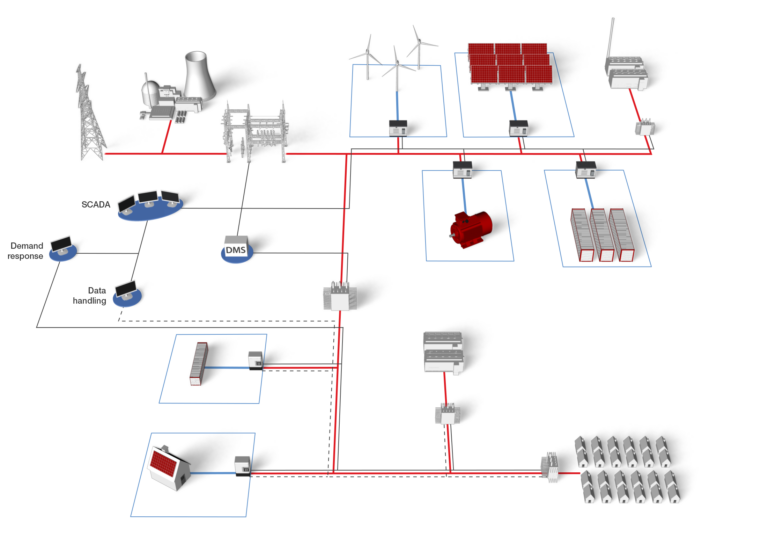Introduction | Test Automation for HIL has Never Been Easier
In an era where efficiency and precision are paramount, Hardware-in-the-Loop (HIL) testing has become essential for validating complex systems. The integration of Typhoon Test Hub into HIL testing marks a powerful evolution, enabling engineers to effortlessly conduct tests with unprecedented speed and accuracy. In a recent webinar, experts from Typhoon HIL and HERO Tech Center Germany (referred to as HERO) highlighted how Typhoon Test Hub streamlines test processes, reduces human error, and enhances real-time automation for battery management system (BMS) applications. This article explores key insights from the webinar, including system setup, challenges encountered, and the solutions Typhoon Test Hub provides.
About | What is Typhoon Test Hub?
Typhoon Test Hub (see Fig.1.) is a comprehensive automation platform that integrates seamlessly with HIL systems. By unifying testing procedures, it provides engineers with a straightforward and streamlined process for setting up, executing, and analyzing test results. Felix Fleissner, Senior Engineer in HIL Testing, noted that Typhoon Test Hub has enabled his team at HERO to conduct battery management system (BMS) tests more efficiently. Fleissner highlighted that the platform’s automation backbone connects with various hardware configurations, making it a versatile tool for BMS testing and validation.

Challenges | Overcoming Challenges in Manual Testing
Traditionally, BMS testing at HERO was conducted manually—a time-consuming and often error-prone process. Fleissner noted that with only one HIL system available, managing the increasing variety of BMS variants became challenging. The introduction of the Typhoon Test Hub (see the HIL setup in Fig. 2) automated repetitive tasks, such as software validation, significantly reducing the time and effort required for each test cycle. Fleissner emphasized that automated testing also brings greater consistency and repeatability, which is essential for comparing different BMS versions and software releases.
Test automation saves a lot of time. Effectively, the time saved was 2-3 weeks for the tests we automated.
Felix Fleissner
Senior Engineer in HIL Testing
HERO Tech Center Germany

HIL Benefits | Automated Testing and Reporting with Typhoon Test Hub
- Test Automation Accessibility: Typhoon Test Hub lowers the entry barrier for integrated HIL test automation. With minimal time investment, it enables users to leverage automated testing from day one, making test automation more accessible through its quick and easy onboarding process.
- Quick Returns on Investment: The time invested in test automation quickly pays off. At HERO, an initial investment of less than 100 hours in writing tests and integrating tests reduced a 3-week manual testing process to a 3-day automated test, greatly accelerating system validation. These gains will become even more significant as new features are added, keeping complex testing procedures as efficient as possible. Additionally, Typhoon Test Hub is equipped to distribute test loads across multiple HIL systems, further improving test efficiency when more than one HIL system is in use.
- Time Efficiency: The automated system minimizes manual intervention, allowing engineers to run tests around the clock without the risk of human error. It’s estimated that automation with a single HIL device can reduce testing time by up to 84% compared to manual testing, leading to faster project timelines. Automated tests can also run 24/7— an additional significant efficiency gain of up to 320% by running tests outside standard working hours, which isn’t feasible for manual testing.
- Enhanced Reproducibility: With Typhoon Test Hub, tests are conducted in a controlled and consistent environment, enabling engineers to identify issues with greater accuracy and precision. The automation framework ensures tests are executed the same way every time, making it easier to track and resolve issues.
- Detailed Reporting and Analysis: The platform generates automated reports with visual data, allowing engineers to quickly review test results and pinpoint areas for improvement. This feature not only simplifies team communication but also empowers managers to make informed decisions based on real-time data.
- Sustainability in Testing: Automation reduces the physical demands on engineers by eliminating repetitive, manual tasks, leading to a more sustainable testing process. With fewer manual tasks, there is also less dependency on human factors, creating a smoother workflow with fewer opportunities for human errors.
Conclusion | Lessons Learned and Future Prospects
During the webinar, the Typhoon HIL team shared valuable lessons learned from implementing automated HIL testing. A key takeaway was the importance of setting clear requirements and specifications for each testing cycle. Fleissner and his colleagues found that having well-defined criteria reduced the likelihood of errors and increased the efficiency of the automation process. Additionally, Typhoon Test Hub’s cloud-hosted capabilities and integration with existing tools have enabled HERO to scale their testing operations, paving the way for future growth.
The Typhoon Test Hub has transformed how HERO Tech Center Germany approaches HIL testing for battery management systems. By automating processes and enhancing reproducibility, the platform has allowed engineers to streamline workflows, reduce manual effort, and improve the overall quality of both their testing outcomes and the end product. As more companies explore the advantages of automated HIL testing, platforms like Typhoon Test Hub will undoubtedly play a pivotal role in advancing the field. For a deeper dive into Typhoon Test Hub’s capabilities and benefits, watch the full webinar and discover how automation can elevate your testing processes.
Test what changes most often: your software. We’ve developed an integrated solution for orchestrating test execution and organizing test results. Compared to our previous solution, this advancement allows you to not only manually execute tests on your HIL benches, but also automate and seamlessly integrate them into your overall development and maintenance processes.
Henrique Magnago
Head of Test Automation Solutions Group
Typhoon HIL
Additional Resources
Credits
Authors | Henrique Magnago, Debora Santo
Visuals | Milica Obradovic
Technical Editor | Henrique Magnago
Blog Editors | Dovlyn Curtis, Debora Santo



